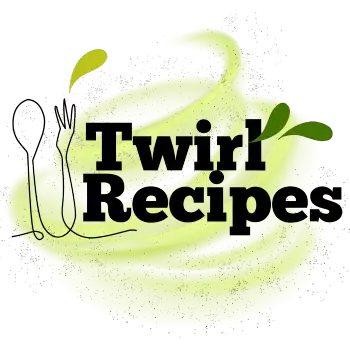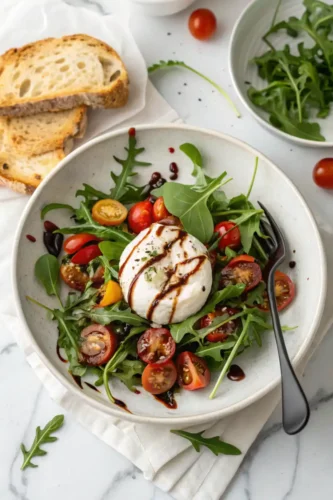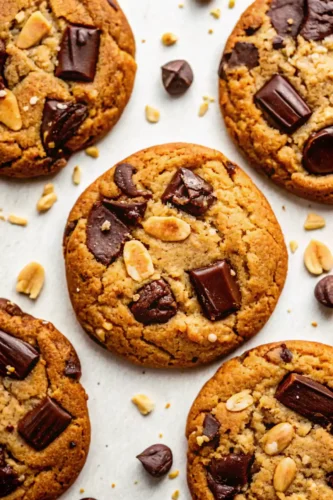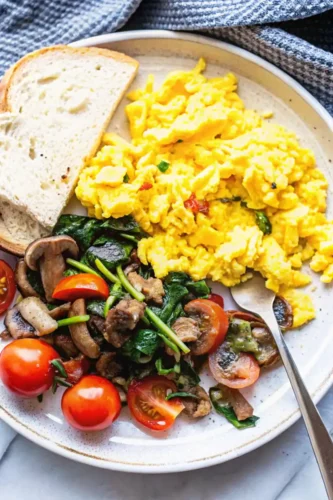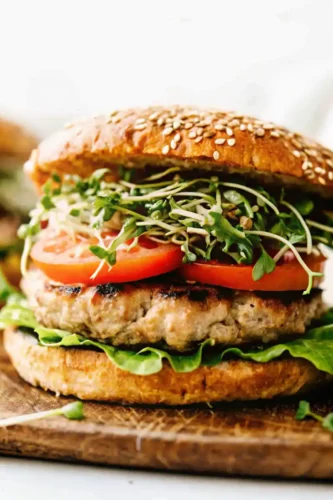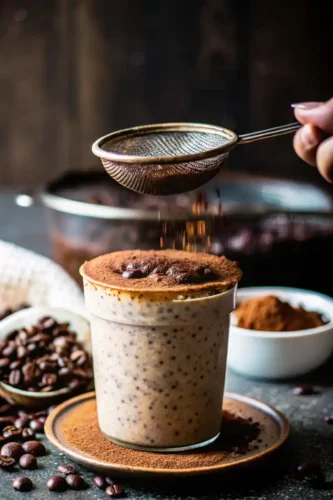Baked Beans Recipe — just saying it brings a sense of comfort. There’s something timeless and deeply satisfying about a warm bowl of baked beans, especially when it’s homemade with love. This dish is hearty, flavorful, and easy to customize depending on the occasion — whether it’s a laid-back family dinner, a weekend cookout, or a cozy meal to enjoy on a quiet night in.
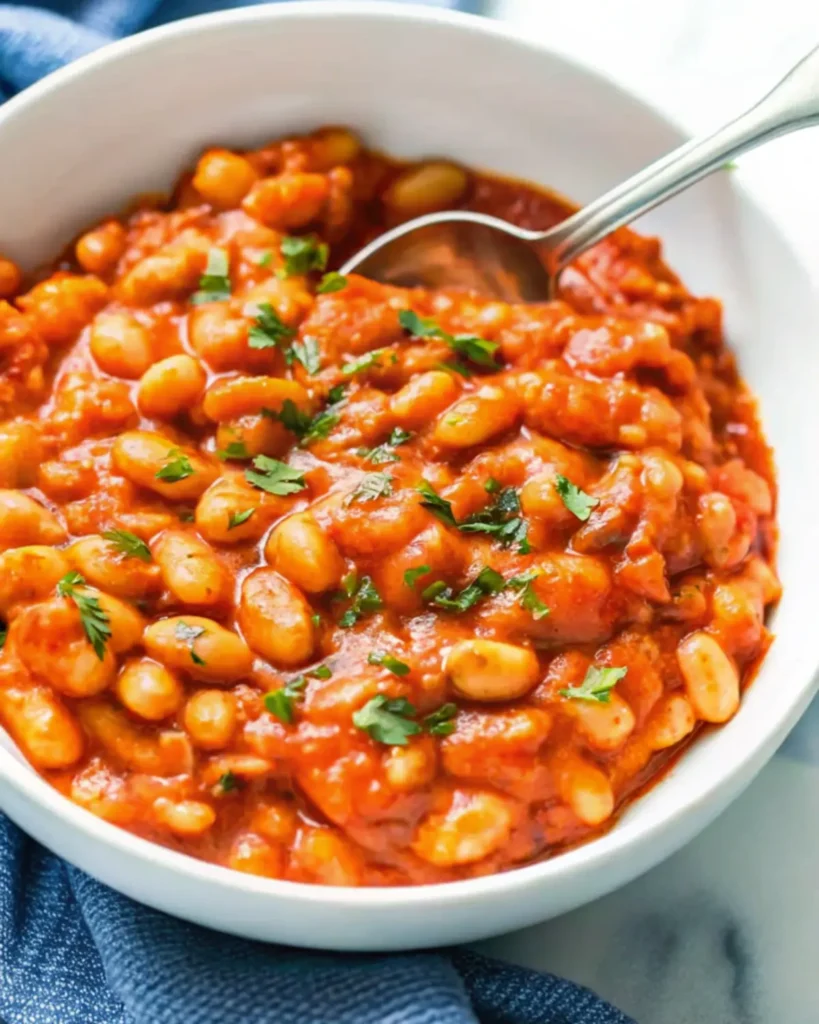
As a home cook who’s always on the lookout for nourishing, no-fuss recipes my whole family will enjoy, this baked beans recipe quickly became a favorite. It’s the kind of dish that fills the kitchen with inviting aromas and brings everyone to the table with a smile. Simple ingredients, a rich depth of flavor, and that perfect balance of sweet and savory — this one’s a keeper you’ll want to make again and again.
Table of Contents
Why This Baked Beans Recipe Will Be Your New Favorite
Easy to Make
This recipe is as simple as it gets! With just a few pantry staples and a handful of fresh ingredients, you can whip up a pot of homemade baked beans without breaking a sweat. It’s perfect for beginners and experienced cooks alike.
Customizable for Any Occasion
One of the best things about this easy baked beans recipe is how adaptable it is. Want it extra sweet? Add more molasses. Prefer a smokier flavor? A touch of smoked paprika or liquid smoke does the trick. No matter how you like your baked beans, this recipe has you covered.
Perfect Balance of Sweet and Savory Flavors
The combination of molasses, brown sugar, and tangy tomato sauce creates a harmony of flavors that’s hard to resist. Add in a few savory spices, and you’ve got a dish that’s as satisfying as it is flavorful.
Bonus Tip: Pair these baked beans with a slice of cornbread or a crisp green salad for a complete meal that’s sure to please the whole family.
Are Baked Beans Healthy? Absolutely!
Baked beans aren’t just a tasty addition to your meal—they’re packed with nutrients that make them a smart choice for your diet. Let’s take a closer look at why this comforting dish can also be a healthy one!
Packed with Protein and Fiber
Did you know that baked beans are an excellent source of plant-based protein? They’re a great way to fuel your body, especially if you’re looking to cut back on meat. Plus, they’re brimming with dietary fiber, which helps keep your digestion on track and keeps you feeling full for longer.
Low in Fat but High in Flavor
Unlike many other hearty dishes, baked beans manage to be rich and satisfying without loading up on unhealthy fats. This makes them an ideal choice for anyone watching their fat intake while still wanting to enjoy a flavorful dish.
Vitamins and Minerals That Support Wellness
Baked beans contain an impressive array of vitamins and minerals, including iron, magnesium, and potassium. These nutrients are vital for maintaining energy levels, bone health, and overall well-being. And let’s not forget the antioxidants from tomatoes, which can help combat inflammation and support a healthy immune system.
Pro Tip: If you’re aiming to make your baked beans recipe even healthier, opt for low-sodium canned beans or soak and cook dried beans yourself.
What You’ll Need to Make Baked Beans
To make the perfect baked beans recipe, you’ll need a mix of pantry staples and a few fresh ingredients that come together to create that signature sweet and savory flavor. Here’s everything you’ll need:
Pantry Staples You Likely Already Have
- Canned Beans (3 cups): Kidney beans, navy beans, or pinto beans all work well. Choose what you have on hand or mix them for variety.
- Tomato Sauce (1 cup): A rich base for your baked beans. Look for unsalted if you want to control the sodium level.
- Brown Sugar (1/4 cup): Adds a subtle sweetness that balances the tangy flavors.
- Molasses (2 tbsp): This ingredient is essential for that deep, rich flavor baked beans are known for.
- Mustard (1 tbsp): Yellow or Dijon mustard adds a tangy kick.
- Apple Cider Vinegar (1 tbsp): Helps to brighten up the dish with a touch of acidity.
- Worcestershire Sauce (1 tsp): For an umami-packed boost. Look for vegan versions if needed.
Fresh Ingredients to Enhance Flavor
- Onion (1 medium, finely chopped): Adds sweetness and depth.
- Garlic (2 cloves, minced): A must for that aromatic, savory base.
- Bell Pepper (optional, diced): Adds a touch of crunch and color to your dish.
Spices for That Extra Kick
- Smoked Paprika (1 tsp): For a hint of smokiness.
- Ground Black Pepper (to taste): Enhances the overall flavor.
- Salt (to taste): Adjust based on your beans and broth.
Optional Add-ins
- Maple Syrup (1 tbsp): For a natural sweetness with a hint of caramel.
- Liquid Smoke (a few drops): Perfect for mimicking that barbecue flavor.
Pro Tip: Keep it flexible! If you’re missing an ingredient, feel free to substitute. For example, honey can replace molasses, or ketchup can stand in for tomato sauce in a pinch.
How to Make Baked Beans
Creating a delicious baked beans recipe is easier than you think! This quick 3-step guide will help you make a flavorful and hearty dish that’s perfect for any occasion.
Step 1: Prepare the Ingredients
Start by chopping the onion and garlic, and measure out your spices, molasses, and tomato sauce. If you’re using canned beans, be sure to drain and rinse them well. Having everything prepped ensures your baked beans recipe comes together smoothly.
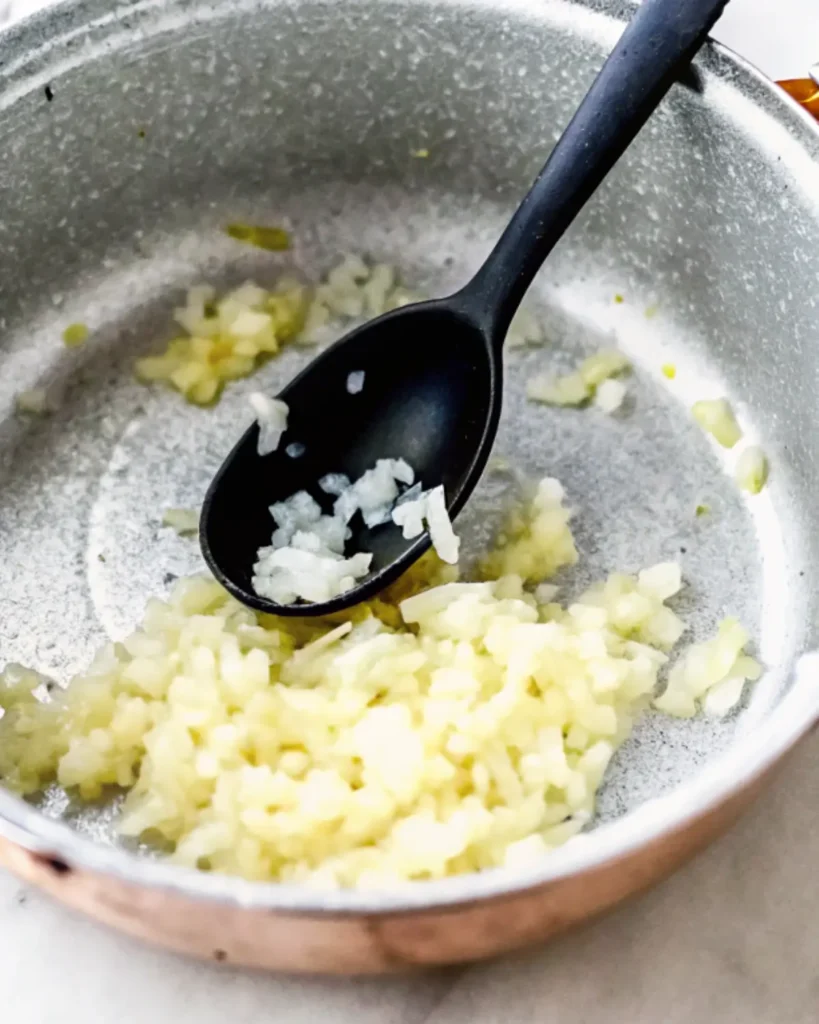
Step 2: Cook the Sauce
Heat some olive oil in a large skillet or Dutch oven over medium heat. Sauté the onion and garlic until fragrant, then mix in the tomato sauce, brown sugar, molasses, mustard, and spices. Let this flavorful sauce simmer for a few minutes—it’s the heart of your baked beans recipe!
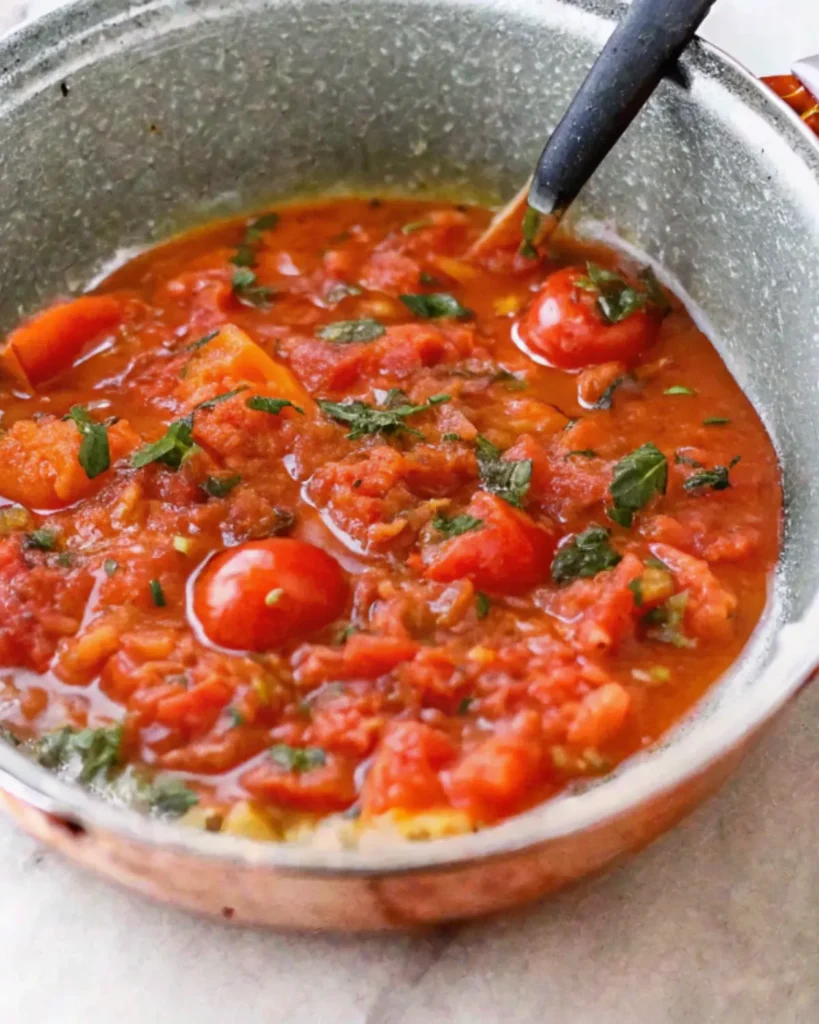
Step 3: Bake to Perfection
Add the beans to the sauce and gently stir to coat them evenly. Transfer the mixture to an oven-safe dish and bake at 350°F (175°C) for 45-60 minutes. Stir occasionally to prevent sticking, and during the last 10 minutes, bake uncovered for a golden, caramelized finish.
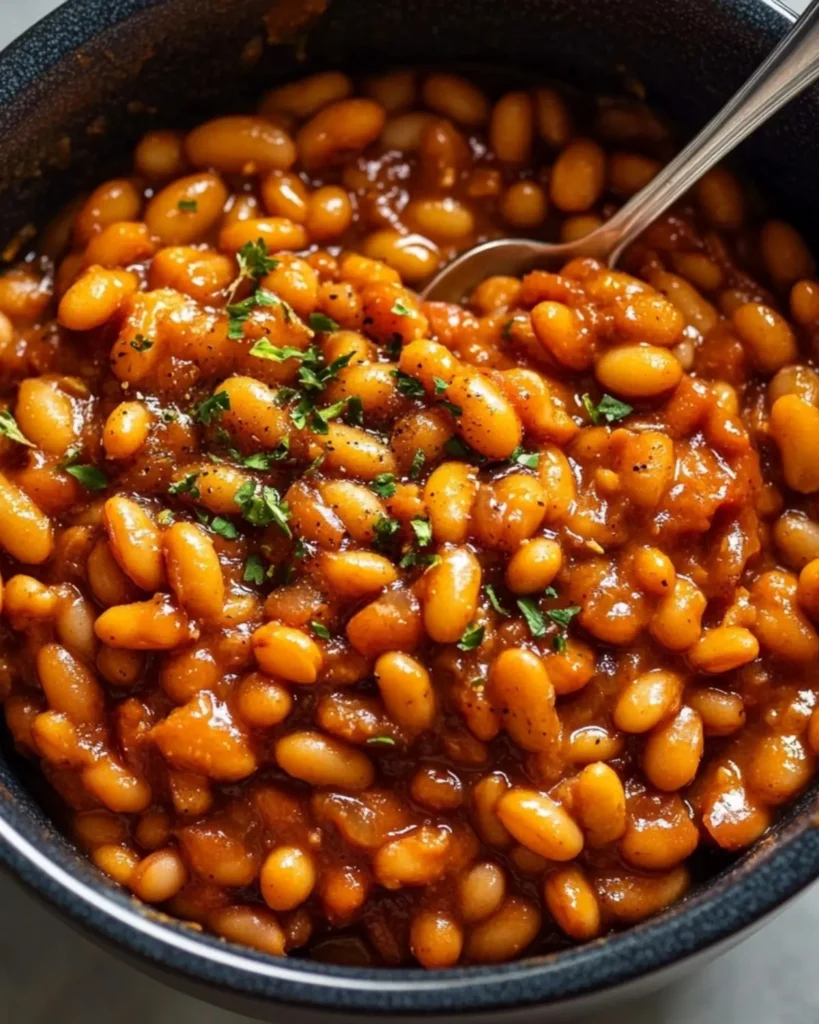
Pro Tip: If the sauce thickens too much during baking, add a splash of water or vegetable broth to keep it creamy. These three steps are all you need for the ultimate homemade baked beans recipe!
How to Store and Reheat Your Baked Beans
So, you’ve made a delicious batch of homemade baked beans—but what if you have leftovers? No worries! Proper storage and reheating will ensure your baked beans taste just as amazing the next day (or even weeks later).
Best Practices for Refrigeration
- Allow the baked beans to cool completely before storing them. Transferring hot beans directly into the fridge can lead to condensation and a soggy texture.
- Store them in an airtight container to lock in the flavors and prevent them from absorbing unwanted odors from the fridge.
- Your baked beans will stay fresh for up to 4-5 days when refrigerated properly.
How to Reheat Baked Beans
- Stovetop Method: Pour the beans into a saucepan and heat over medium-low, stirring occasionally. If they’ve thickened during storage, add a splash of water or vegetable broth to loosen them up.
- Microwave Method: Place a portion in a microwave-safe dish, cover it with a lid or microwave-safe wrap, and heat in short bursts, stirring between intervals to ensure even heating.
Can You Freeze Baked Beans? Yes, Here’s How
Freezing is an excellent way to preserve your baked beans recipe for longer. Follow these steps to keep them freezer-ready:
- Once cooled, portion the beans into freezer-safe containers or resealable freezer bags. This makes it easy to thaw only what you need.
- Leave a bit of space at the top of the container to allow for expansion during freezing.
- Label and date the containers to keep track of their freshness. Frozen baked beans can last up to 3 months in the freezer.
How to Thaw and Reheat Frozen Baked Beans
- Transfer the container to the fridge and let it thaw overnight.
- Reheat using the stovetop or microwave methods mentioned earlier. If the beans seem a little watery after thawing, simmer them for a few minutes to reduce excess liquid and restore their original texture.
Pro Tip: Divide your baked beans into single-serving portions before freezing. This way, you can easily grab just enough for a quick side dish or snack without having to thaw the entire batch.
What to Serve with Baked Beans
Baked beans are the ultimate side dish, but they can also be the star of the show! Whether you’re hosting a barbecue, preparing a cozy family dinner, or looking for a simple weeknight meal, here are some fantastic ways to serve your homemade baked beans recipe.
Perfect BBQ Side Dish
Baked beans are a match made in heaven with grilled dishes. Their sweet and smoky flavors complement the charred goodness of grilled vegetables, corn on the cob, or veggie burgers. For a true barbecue experience, pair your baked beans with crispy coleslaw or grilled potatoes for a satisfying, well-rounded plate.
Pairing Ideas for Everyday Meals
- Serve your baked beans alongside a fresh garden salad for a lighter meal.
- Add them to a hearty grain bowl with quinoa or brown rice, topped with roasted veggies for a nutritious twist.
- Use them as a filling for a baked sweet potato—just spoon them on top, sprinkle with chopped parsley, and enjoy!
Vegetarian and Vegan Pairing Options
- Pair baked beans with vegan cornbread or crusty whole-grain bread for a complete protein-packed meal.
- For an all-veggie platter, combine baked beans with sautéed greens, roasted Brussels sprouts, and a tangy cucumber salad.
- Add them as a topping for a loaded baked potato bar with options like dairy-free sour cream, chopped green onions, and shredded vegan cheese.
Pro Tip: For gatherings, serve baked beans in a slow cooker to keep them warm throughout the meal. Place them alongside complementary dishes like salads, bread, and grilled veggies to create a buffet-style spread that everyone will love.
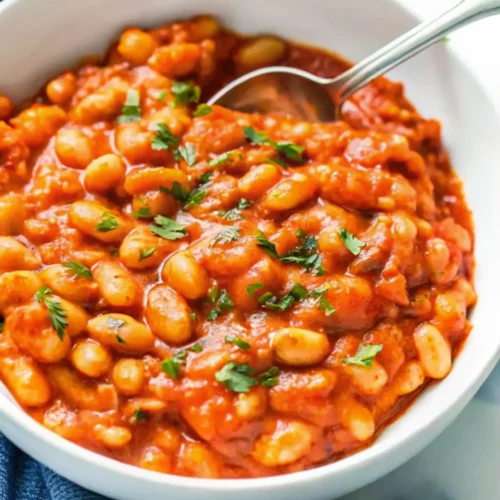
Baked Beans Recipe
Ingredients
- 3 cups canned beans kidney, navy, or pinto; drained and rinsed
- 1 cup tomato sauce unsalted preferred
- ¼ cup brown sugar
- 2 tablespoons molasses
- 1 tablespoon mustard yellow or Dijon
- 1 tablespoon apple cider vinegar
- 1 teaspoon Worcestershire sauce use vegan if needed
- 1 medium onion, finely chopped
- 2 cloves garlic, minced
- 1 bell pepper, diced optional
- 1 teaspoon smoked paprika
- to taste ground black pepper
- to taste salt
- 1 tablespoon maple syrup optional
- a few drops liquid smoke optional
- 1 tablespoon olive oil for sautéing
Instructions
- Preheat the oven to 350°F (175°C).
- Chop the onion and garlic. Measure out all spices and wet ingredients.
- In a skillet or Dutch oven, heat olive oil over medium heat. Sauté onion and garlic until fragrant.
- Stir in tomato sauce, brown sugar, molasses, mustard, vinegar, Worcestershire sauce, and spices. Simmer for a few minutes.
- Add drained and rinsed beans. Stir to coat beans evenly with the sauce.
- Transfer mixture to an oven-safe dish. Bake for 45–60 minutes, stirring occasionally.
- During the last 10 minutes, bake uncovered for a caramelized top. Add water or broth if the sauce thickens too much.
Notes
Frequently Asked Questions About Baked Beans Recipes
Which Type of Beans Are Used in Baked Beans?
The most common beans used in baked beans are navy beans, but you can also use pinto beans, kidney beans, or great northern beans. Navy beans are popular because of their small size, creamy texture, and ability to soak up flavors, making them ideal for this dish. You can even mix different types of beans for a unique twist on the classic recipe!
Can I Use Coins Instead of Baking Beans?
No, you should not use coins instead of baking beans. Baking beans are typically ceramic or dried beans used to weigh down pie crusts during blind baking, ensuring they don’t puff up. Coins could heat unevenly and potentially damage your crust or baking dish. If you don’t have baking beans, you can use alternatives like uncooked rice or lentils to achieve the same effect.
Are Baked Beans Good for Your Stomach?
Yes, baked beans can be great for your stomach! They are rich in fiber, which promotes healthy digestion and helps maintain regularity. The plant-based protein in baked beans is also easy to digest for most people. However, beans can sometimes cause bloating or gas due to their natural oligosaccharides. Soaking dried beans and rinsing canned beans before cooking can reduce these effects.
Why Do You Put Vinegar in Baked Beans?
Vinegar is added to baked beans to provide a subtle tanginess that balances the dish’s sweetness. It enhances the flavor complexity and can also act as a natural tenderizer for the beans. Common choices like apple cider vinegar or white vinegar complement the sauce’s rich and smoky notes, giving your baked beans a well-rounded taste. Adding it toward the end of cooking preserves its zesty impact.
